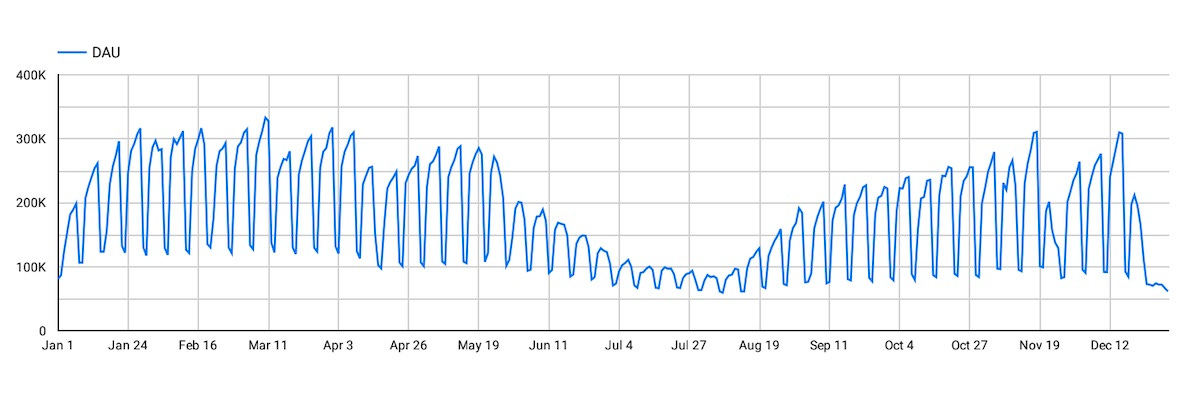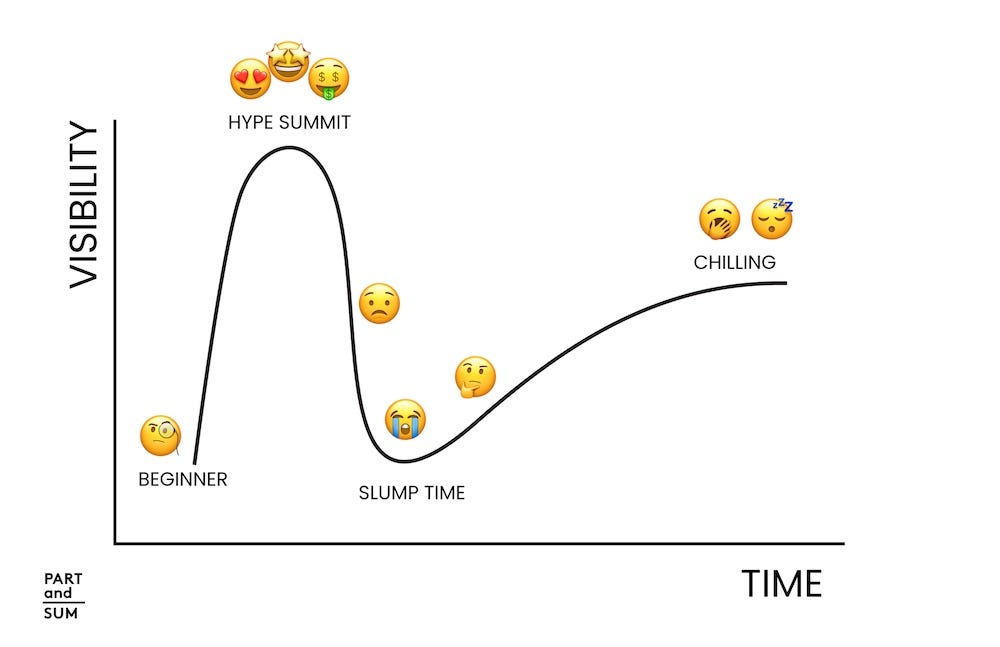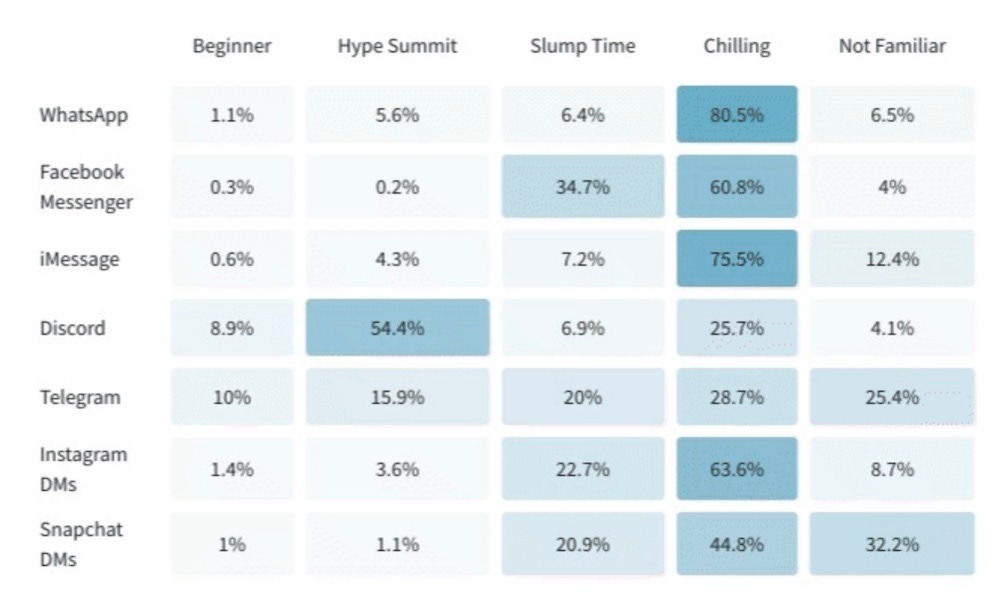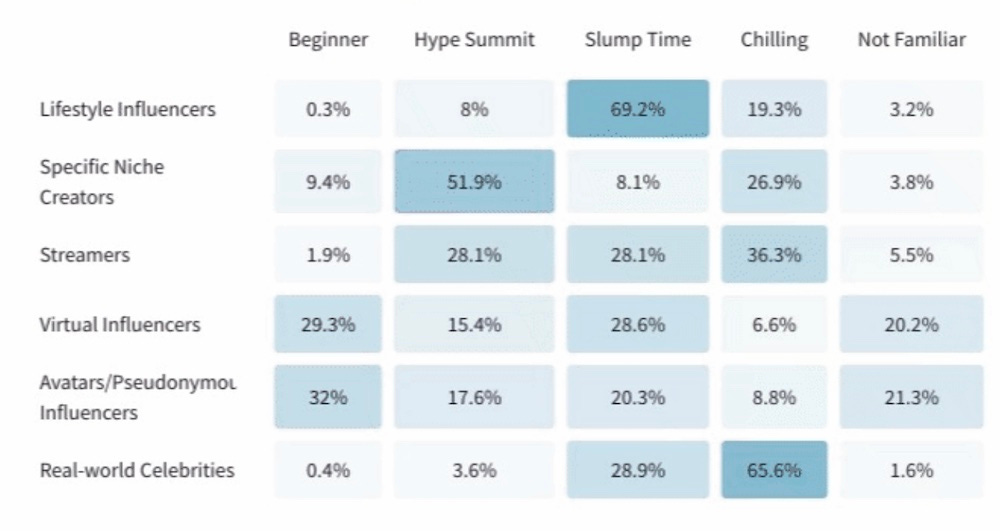Deep dive: Shell Shockers' multi-million $ web game success
Publikováno: 30.1.2023
Also: interesting Hype Curve research & lots of discovery news.
[The GameDiscoverCo game discovery newsletter is written by ‘how people find your game’ expert & company founder Simon Carless, and is a regular look at how people discover and buy video games in the 2020s.]
Welcome back to another week of, let’s face it, endless news from the incredibly complex world of PC and console game discovery, aka ‘how did people find & buy that game, and can you make them do it to ours a few more million times?’
This time, we’re kicking things off with one of our favorite discovery stories in a while. Wha? A decent-sized, profitable business in a niche that many of you probably aren’t paying any attention to: web browser games.
[Reminder: upgrade to a GameDiscoverCo Plus paid subscription, and you can chat to colleagues and us on Discord, get our Friday ‘exclusive’ newsletter, get access to our Steam ‘Hype’ & game performance chart back-end, read multiple eBooks & more. It’s good times!]
Shell Shockers: probing its shooty egg success?
We know that ‘games you play in your web browser’ might seem like a hopelessly dated topic. But there are genuinely big games in the space in 2023 - like ‘eat other players’ title Agar.io & Slither.io, FPS Krunker.io, and racing combat game SmashKarts.io.
We recently got a chance to catch up with Jason Kapalka, one of the founders of casual game titans PopCap (Plants Vs. Zombies, Bejeweled), and discovered that one of his post-PopCap initiatives as the founder of Blue Wizard Digital was building another of these titles - egg-based multiplayer browser FPS (!) Shell Shockers.
As a true independent, Jason was able to be super-transparent with us on the game, which has revenue “in the low seven figures annually”, almost entirely via the web version. (There are mobile versions of the game too. But as a twitchy FPS - see above fan-made highlight video - it looks like it works best on a PC.) Here’s what we learned:
The main target market? A lot of schoolkids, sometimes playing on school computers: while 51% of players user Windows, Jason notes that Chromebook laptops were 39% of the player-base (!), and mobile is still only around 10 percent. As for age: “the range is largely in the 10 to 15 year-old category. They definitely play with their friends and classmates.”
Geography? This is largely North American, with 47.6% U.S. traffic and 6.4% Canadian, and what Jason calls “a fair amount in South America and Europe” - Brazil, Spain, the Netherlands (and Taiwan) are the next-ranked countries. He adds: “Within the U.S., it seems fairly evenly spread around [between states].”
Monetization is majority ads, but also cosmetics: as Jason notes: “The business model is approximately 80-90% ad driven, with various banners and video ads displayed during play. The microtransaction revenue is roughly 50/50 between premium cosmetic items like hats, weapon skins, etc, and VIP status that removes ads and gives various bonuses (non-competitive stuff, like extra egg colors, etc).”
Would you like some more proof that this game is mainly played by schoolkids, during the school year? Look at this fascinating 2022 DAU chart for Shell Shockers:
That’s some good data there! You can even see U.S. Thanksgiving week holiday at the end of November, reflected in the numbers. (Also some impressive Daily Active User - DAU - peaks between 300k and 350k.)
But that’s not all. Here’s some extra insight from Jason, who was a very helpful tutor, alongside colleague Nate Schmold, into this relatively unknown-to-us world:
How do these games even work on web browsers? “Ultimately all web games now are in HTML5… some are Unity-based, others use 2D platforms like Godot. Some, like Shell Shockers, are unholy mutations of Javascript like Babylon.js. The multiplayer backends tend to be fairly complex compared to the graphical front-ends, as they need to handle 10,000+ simultaneous players.” He notes that the trickiest part is making the games run at a good framerate on “frankly very underpowered” Chromebooks.
How do you get the word out? Not that easily, it turns out: “It's difficult to market or advertise web games effectively. There's no press, limited influencers, and most players are doing so as a bit of a forbidden activity in school. Generally features that encourage face-to-face virality work best... eg our newer game Basket Bros enables head to head play on the same computer or across a network.”
What are even quirkier quirks of this niche market? Two things: one is that there’s a “cat and mouse with various school admins” over blocking the URLs to these sites, which is why Shell Shockers is playable via http://geometry.monster (lol!), and there are even fake portal sites (hit the ‘activities’ tab!) for multiple web games.
Triumph through controller adversity: finally - you need a pro-level mouse and keyboard set-up to rock at PC FPSes, right? Maybe not! Jason notes: “we were astonished how many of [our players] were playing a competitive multiplayer FPS incredibly well using just a trackpad... simply because their school Chromebook didn't have a mouse.” Wow.
So there you go. I don’t think there have been many stories written about this niche, ever. So we had a lot of fun exploring it for you. (Those who claimed that web browser games died with the Flash game scene may have been misinformed, huh?)
Why Discord & niche creators win the Hype cycle
Interesting data alert: strategy/media agency Part & Sum hooked up with one of my favorite newsletters, Garbage Day, to survey 1,300+ ‘very online’ people about where on the Gartner Hype Cycle (above, with emoji!) certain trends and tech were located.
We recommend reading the full thing to get more info. And we actually think more game companies should think about using the ‘hype cycle’ methodology to think about trends? But for our game-y space, here are the most interesting takeaways:
Messaging apps: Discord has the hot hand
Part & Sum explains: “Messaging is considered the internet’s ‘safe space’ - untouched by algorithms or ads and where socialization and community are still the main objectives.” And what’s interesting is that Discord seems to be very highest in visibility right now.
This partly explains why Discord can be a great space to talk to players in the PC/console game space. P&S notes: “Messaging apps are also a place where creators and super influencers can directly communicate with their followers and build relationships.”
Since Discord has everything from private DMs, tiny ‘friends’ servers, & bigger game-specific servers on it, it nicely splits the difference between ‘true’ community and marketing. Sure, perhaps Discord doesn’t scale to all Call Of Duty-sized games. But at small and medium scale: it’s great.
Creators: all rise the era of the niche influencer!
Again, remember this data set is a lot of ‘very online’ people, so might represent a more committed audience for games. But it’s interesting to see ‘specific niche creators’ being trumpeted as something high-visibility (and good) right now.
How I’d interpret this in our space: the top YouTubers for indie games we’ve profiled have built up a lot of credibility, because they play certain types of games. They have a lot of value precisely because they are niche, not broad PewDiePie-style entertainers.
On the other hand, virtual influencers (or vTubers!) are a bit earlier on the Hype curve in the West - hence the higher ‘beginner’ rating. And real-world celebrities? They exist, they’re fine, they’re chilling. (And you probably can’t get them to play your RTS.)
The game discovery news round-up..
So, as we reach the end of this wondrous missive, time to open the floor up to ‘other websites offering us information about game discovery’. And that information is:
Sony would like you to know that there are PlayStation 5s in stock, so you can buy them now: “Thank you for your patience as we navigated unprecedented demand for the PS5 console amid global challenges… you should now have a much easier time finding one at retailers globally.” Huh - that’s actually a sensible thing to publicize…
There’s an apparently temporary price drop for Meta’s Quest Pro from $1,500 to $1,100 in the US, but: “The new price [is] only for one week in the US, and two weeks in the UK (where the price is dropping [from £1,500] to £1,300). But it's a notable reduction for a headset that was widely criticized for its high price when it debuted last fall.”
Practical, unofficial guide to visiting Game Developers Conference this March? The Games Industry Gathering crew made one of these, and I found it pretty handy. (Oh, and bonus points for the local arcade & barcade rundown.)
Our buddies at Steam have an interesting new ‘Steam Labs Experiment’(above) to show off: “A store hub designed to help you find new content to enjoy in the games you already play.” The personalized DLC hub is most popular DLC for the games in your library, broken down by ‘Recently Played’ and ‘Most Played’. Smart idea.
Even more Microsoft x Activision (x Sony) drama? Sure: Sony’s Jim Ryan reportedly met the EU antitrust chief last week about the MS x ATVI deal, and Microsoft’s Frank X Shaw has something to say about it in a Twitter thread: “I hear Sony is briefing people in Brussels claiming Microsoft is unwilling to offer them parity for Call of Duty if we acquire Activision. Nothing could be further from the truth.”
We rarely get data on GOG.com, so thanks to the Install Base Forum for pointing out some ‘end of 2022’ milestones from the PC platform: 684 new games released, best-selling new releases were deep strategy/RPG style - Songs Of Conquest, Elex II and Old World, and 137 million hours of play logged in the GOG Galaxy app.
The Game Developers Choice Awards announced its nominees for this March’s ceremony at GDC: “FromSoftware's fantasy epic Elden Ring and BlueTwelve's dystopian cat adventure Stray are tied for the lead with six nominations each, followed by Sony Santa Monica's God of War Ragnarök (five nominations) and Obsidian's Pentiment (four nominations).” These games & Immortality and Tunic also nommed for GOTY!
Xbox just confirmed it will have a ‘not-E3’ or possible even ‘E3’-aligned platform showcase, likely in June: “Look forward to sharing even more of what is next for our fans when we return to Los Angeles for our yearly Showcase this summer.” This is in addition to a standalone Starfield ‘virtual showcase’ at some point soon.
VC-adjacent ‘future thinker’ Matthew Ball wrote on VR/AR’s path to the mainstream - or not: “The future was supposed to have arrived by now. In 2023, it’s difficult to say that a critical mass of consumers or businesses believe there’s a “killer” AR/VR/MR experience in market today; just familiar promises of the killer use cases that might be a few years away.” He’s also in the ‘metaverse is Roblox, now’ camp that I also belong to, whenever I’m forced to define the term ‘metaverse’ at knifepoint.
Microlinks: Twitch execs did a 2022 lookback and 2023 lookahead talking about discovery improvements; Amazon Prime Gaming’s February free stuff includes Space Warlord Organ Trading Simulator (woo!) & Apex Legends items; Dead Cells hit 5 million downloads on mobile across paid, Apple Arcade, and Google Play Pass.
Finally, Daniel Floyd’s New Frame Plus YouTube game animation-centric channel is sparsely updated, but amazing. Check his retrospective of 2022’s best game anims:
[We’re GameDiscoverCo, an agency based around one simple issue: how do players find, buy and enjoy your premium PC or console game? We run the newsletter you’re reading, and provide consulting services for publishers, funds, and other smart game industry folks.]




